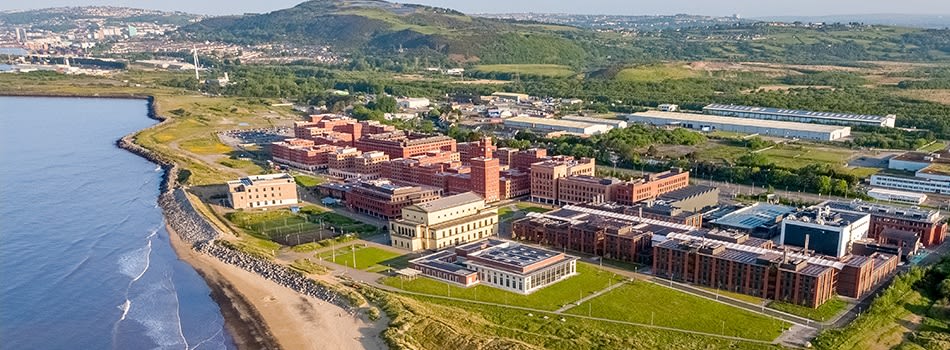This scholarship is funded by the EPSRC iCASE Award with Siemens Healthineers Magnet Technology.
Start date: October 2021 or January 2022
Subject areas: Computational Mechanics; Engineering Simulation
Project supervisors:
Project description:
THE PROBLEM: The functioning of an MRI scanner relies on high strength and extremely uniform magnetic fields generated through superconducting magnets (i.e. main coils) and non-uniform magnetic fields generated by time-varying current signatures specified in AC gradient coils. A third key component in an MRI scanner is the so-called cryostat, which is comprised of a series of radiation shields and keeps the main magnet coils immersed in liquid Helium (~50K in the vacuum space) within a Helium vessel. On the contrary, the gradient coils sit outside the cryostat at room temperature.
Unfortunately, externally generated vibrations, also known as Floor Borne Vibrations (FBV), introduce undesirable accelerations on the magnets. These vibrations can lead to relative movement between the radiation shields and the magnets, thus generating unwanted eddy currents in the shields which, in turn, produce secondary magnetic fields, the latter affecting the quality of the primary uniform magnetic field and, ultimately, resulting in non-desirable imaging artefacts.
THE CHALLENGE: To alleviate the negative impact of FBV, magnets are built with some amount of vibration isolation either underneath the cryostat, in the form of either a soft rubber matting or a spring-damper assembly, or by trial and error changes to the mechanical behaviour of the magnet and cryostat interface. However, the optimal design and the precise location of these vibration isolation devices within a realistic 3D MRI configuration is an extremely complex task which requires expert human intervention.
The challenge at hand consists of predicting the performance of the MRI scanner over a wide range of input acceleration frequencies and determining the engineering changes required to reduce its sensitivity to FBV, via (a) the optimal selection of material parameters (i.e. shield conductivity, carbon fibre suspension stiffness) and (b) the shape optimisation of the MRI scanner components (i.e. flat or round ends in radiation shield components). This requires the a-priori (and very accurate) knowledge of the effect of FBV on: (a) the magnetic field distribution and (b) the output image quality. This can only be achieved via cutting-edge high-fidelity in-silico modelling tools, robustly benchmarked against available experimental data, and embedded within the design cycle at Siemens Healthineers via the use of Reduced Order Modelling techniques which can permit the rapid variation of material parameters and/or geometrical features.
THE AIM: The development of a new robust, accurate and fast data-driven 3D in-silico Reduce Order Modelling computational framework for the modelling of FBV on MRI performance and imaging quality.
LEGACY: A user-friendly high-fidelity software tool (to be deployed within Siemens Healthineers) capable of modelling the impact of FBV on realistic MRI scanner configurations, considering rapid variation of material parameters and/or geometrical features whilst minimising the need for expert human intervention.
Available resources/facilities: Access to College of Engineering’s Computer Clusters

 Continue with Facebook
Continue with Facebook


